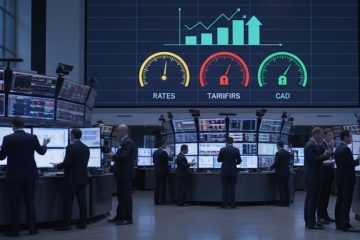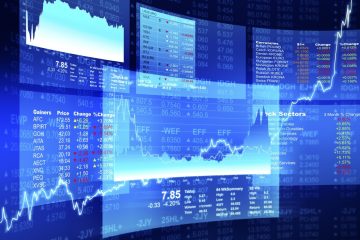Universal Economies: Cross-Platform Digital Assets

The digital environment is changing. It is moving towards ecosystems where value no longer has strict boundaries. Cross-platform digital assets are a radical solution to ownership, utility, and economic engagement that is going to transform the way we conceptualize digital property and virtual economies. These assets are portable value units that preserve their value and utility on various platforms, applications, and digital spaces.
In essence, a cross-platform digital asset is a tokenized value or utility expression that is not dependent on a particular platform or service. Unlike conventional digital assets, which are tied to a particular application or ecosystem, these assets are secured by blockchain technology. This allows them to be owned outright, be verifiably scarce, and be easily transferred. Blockchain technology allows individuals to transport their digital assets across platforms, opening up new possibilities of value creation and economic engagement never seen before.
Technical Foundation
The cross-platform digital assets’ infrastructure is based on a number of major technological elements functioning together. The lower layer is blockchain networks, which offer unchanging ledgers that record ownership and transaction history. Smart contracts enforce the logic of asset behaviour, transfers, and interactions and the protocols are standardized to allow compatibility between various platforms and applications.
Bridge technologies act like connectors, allowing digital assets to move smoothly between different blockchains and platforms. They ensure that when assets are transferred, they maintain value and functionality. This keeps assets worth what they are, no matter the platform.
Another important element is metadata standards, which makes sure every asset’s vital information accompanies it in every platform. This consists of ownership history, provenance information, utility requirements and any special characteristics or features that determine the functionality of the asset. These standards form a common language, which is understandable and interpretable by all the involved platforms.
Real-World Applications and Uses
Entertainment has become one of the most fertile areas of cross-platform digital asset adoption. Online games, online communities and virtual worlds are adopting systems that enable users to own and move assets across environments. This opens up new opportunities for user interaction, community formation and economic involvement.
Take the idea of digital collectibles, which maintain their value and functionality across several entertainment platforms. Special features or privileges could be opened in one environment by a rare virtual item earned in another, so that experiences could be linked to reward loyalty and engagement by users. This strategy will turn individual platforms from silos into a bigger and interlinked digital economy.
The world of competitive entertainment and professional esports is experimenting with the use of cross-platform resources to improve the events of the tournament and generate new income. Depending on the number of digital assets possessed, participants may receive transferable achievements, unlock special content, or have access to special events on a variety of platforms.
The Revolution in Entertainment
Cross-platform digital assets are being integrated into entertainment ecosystems, offering opportunities for user engagement and monetization unprecedented in the past. The old entertainment platforms were closed-loop economies in which value produced in the system was captured. These barriers are smashed by cross-platform assets, which enables value to flow freely between various entertainment experiences.
Solana blockchain has emerged as a particularly attractive infrastructure for entertainment platforms looking to implement cross-platform digital assets. It has a high transaction throughput rate and low fees, making it suitable to be used in the numerous microtransactions that are typical of entertainment settings. Many online entertainment venues are building specifically because it can process thousands of transactions per second without the network congestion issues that plague other blockchain networks. This is a technical prerequisite to platforms that must support real-time asset transfer, reward distribution, and user interaction without causing friction within the user experience.
Cryptocurrency casinos were among the first to use Solana, which is fast, allowing instant bets and near-instant withdrawals. The network’s ability to handle high-frequency transactions is vital for live dealer games and sports betting platforms, where timing is crucial.
Programmable assets are helping content creators and entertainment platforms find new ways to monetize by creating a steady source of revenue. Such assets can be engineered to generate royalties to creators when they are traded or used, which generates long-term income possibilities well beyond first sales. This programmability introduces business models that did not exist in traditional digital goods.
The social side of cross-platform assets is also very strong. With items that people can actually own and display on various platforms, users form more emotional ties to such digital objects. It is this psychological investment that increases the engagement levels and builds more robust and dynamic entertainment property communities.
Economic Implications And Value Creation
Cross-platform digital assets are radically changing the economics of digital spaces by presenting ideas of actual ownership, scarcity, and transferable value. The conventional digital economies were based on fake scarcity enforced by platform operators, whereas blockchain-based resources establish scarcity that is provable and users can rely on.
Cross-platform transfers create new opportunities for smart traders to profit from price differences between platforms. Players can buy digital assets where they’re cheap and sell them where prices are higher. This helps balance prices across the entire digital ecosystem.
Network effects become very strong when assets can flow between platforms. The more platforms use compatible standards and start accepting cross-platform assets, the more the utility and value of the existing assets grow. This forms positive feedback loops that are mutually beneficial to the users and platform operators, promoting wider adoption and more integration.
The bonus value inherent in cross-platform digital assets extends beyond their immediate utility within any single platform. Users are much more ready to invest in the purchase and upgrade of these assets when they can be confident that their digital investments will not lose their value and functionality in various environments. This augmented investment offers greater revenue prospects to platforms as well as offering users assets that bring value in the whole of their digital entertainment experience instead of being tied to a specific venue.
Problems and Solutions
Cross-platform digital assets have many implementation problems, even though they are promising, and the industry is still working on them. Technical interoperability is not an easy task, and it needs to be well coordinated among various platforms and blockchain networks. The process of developing standards is continuous and needs a wide collaboration and compromise within the industry.
The user experience is the key consideration because the underlying blockchain technology should be unnoticeable to users and yet it should deliver the advantages of actual ownership and transferability. Platforms are also spending a lot of money in the development of smooth interfaces that can perform complex technical tasks behind the scenes.
The existence of regulatory uncertainty in different jurisdictions adds more complexity to platforms interested in adopting cross-platform asset systems. The regulation of digital assets can differ in particular regions, and it needs to be considered carefully, with legal attention paid to compliance planning.
Scalability issues continue to exist as blockchain networks struggle to support the transaction volumes necessary to get into the mainstream. Nevertheless, these issues are being solved progressively effectively through constant advancements in technology and the creation of layer-2 solutions.
The Future Landscape
The road to universal digital economies fuelled by cross-platform assets seems to be one-way. With technical issues being ironed out and more users becoming accustomed to the idea, we are likely to see more advanced implementations that will erase the boundaries between various digital spaces and provide genuinely seamless experiences.
Cross-platform digital assets can be highly beneficial and appealing as they can be integrated with augmented reality and virtual reality technology. These resources may soon become virtual goods that are present and functional in mixed reality space, extending their uses even further.
Another evolution opportunity is the artificial intelligence integration, as AI systems may be used to manage complex asset portfolios, optimize value across platforms, and generate personalized asset suggestions depending on user behavior and preferences.
The adoption of cross-platform digital assets by the entertainment industry is only the first step in a wider process of adopting interconnected digital economies. As the technology evolves and user bases increase, we can anticipate ever more complex applications which generate new types of value, community and economic engagement.
This technological change is set to make digital ownership more democratic, opening new chances to creators, users, and platforms alike. The emerging digital economy will be liquid, interoperable, and user-controlled, and cross-platform digital assets will be the new building blocks of this emerging paradigm. Going into the future, the platforms and users that adopt these technologies early will be in the best position to enjoy the opportunities they generate.










